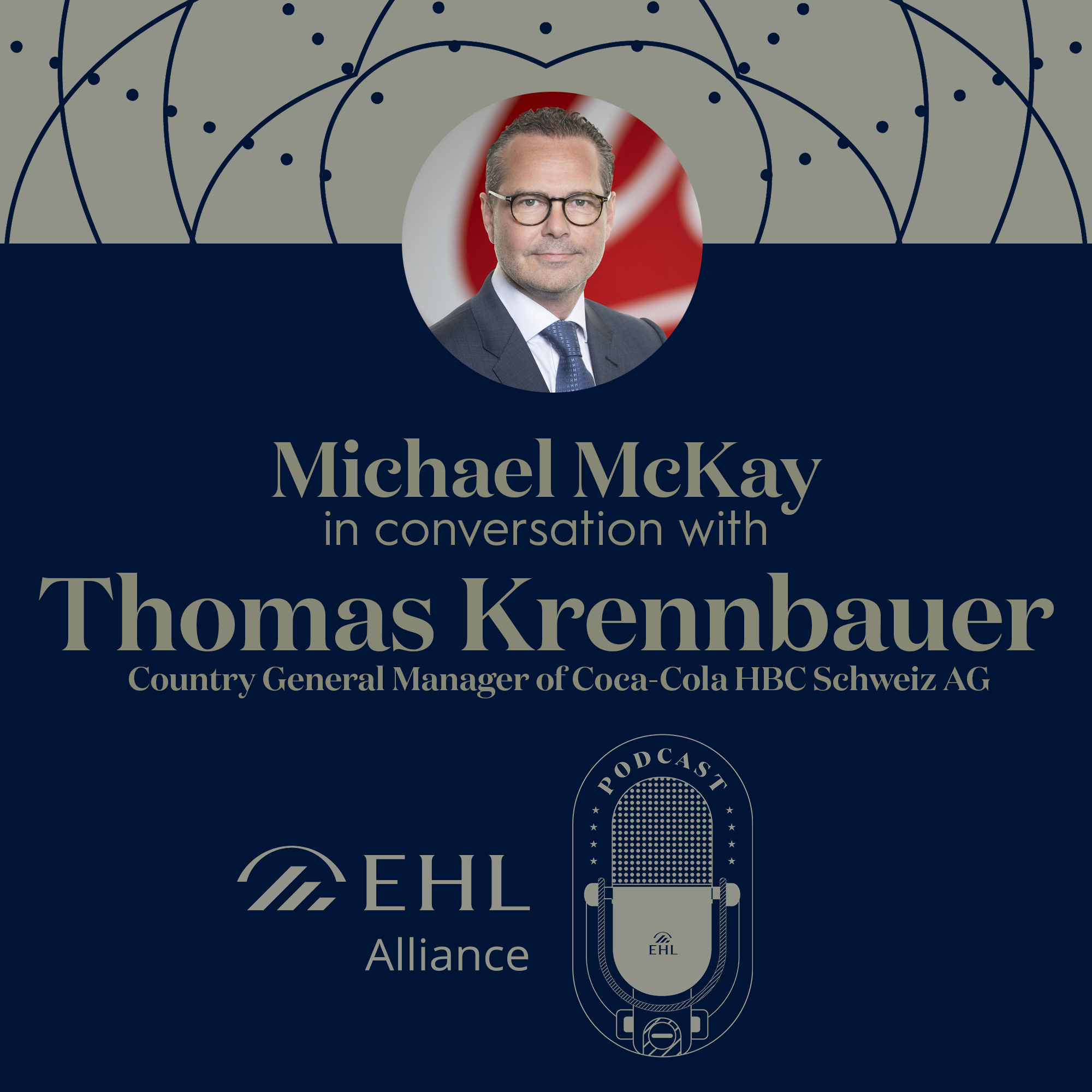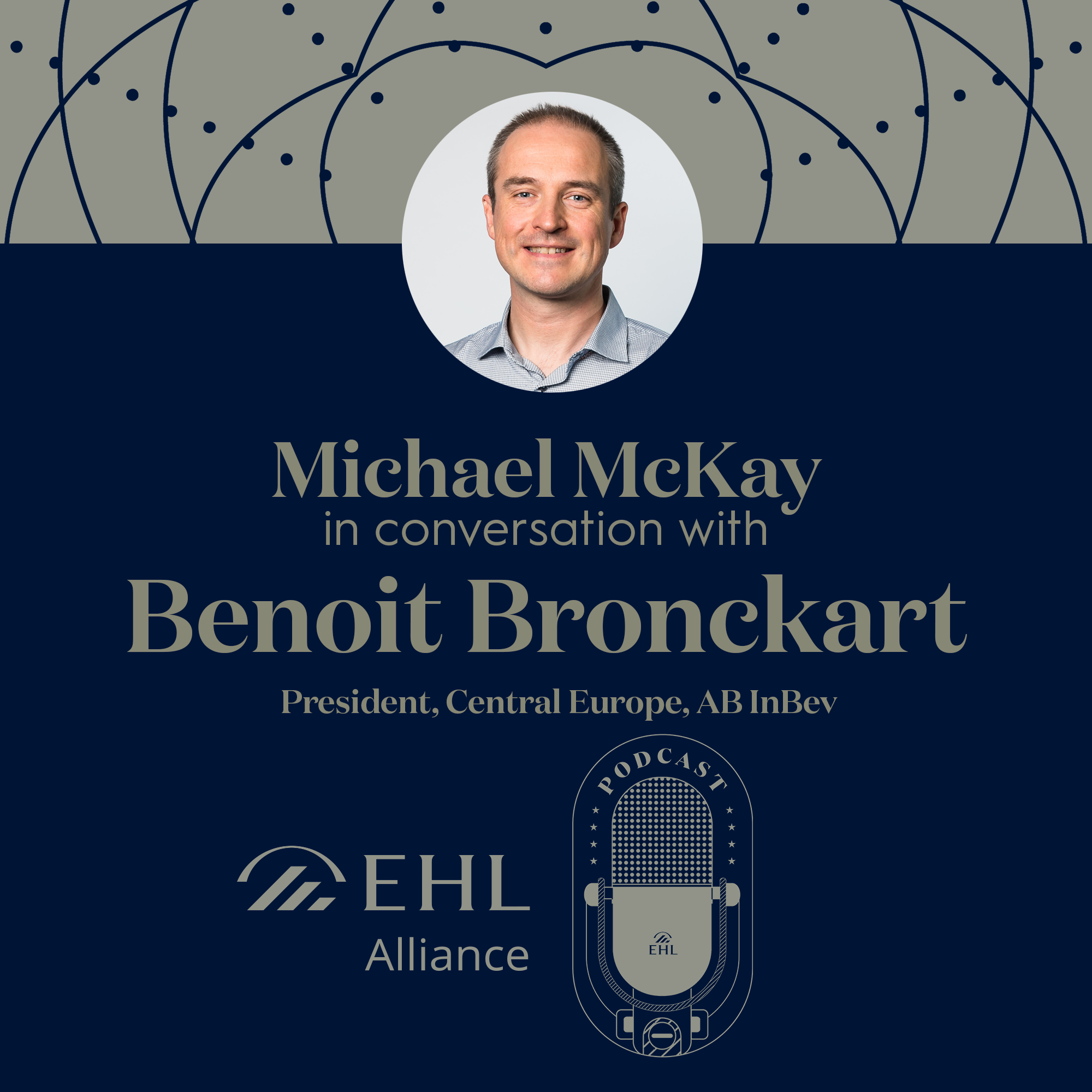People often mistakenly use the terms 'invention' and 'innovation' interchangeably. Equating the two terms misses a number of key subtleties in application that can completely change the conversation. In a conversation with EHL, Edward Bernardon, the Vice President Strategic Automotive Initiatives, Siemens Digital Industries, enlightens us how, in a career spanning over 25 years and three industries, he learned to tell them apart and how to nurture them in a corporate environment.
Businesses in every industry today aim at becoming leaders in innovation as the solution to sustaining their growth and stay relevant in an uncertain and complex business environment. Modern business leaders know the benefits of innovation in business as a way to boost growth and outdo the competition. Consequently, every industry is constantly searching for the most creative individuals, managers, and executives.
Unfortunately, many fail to nurture environments or individuals that spur innovative ideas, instead choosing to settle for the inventive.
Edward Bernardon, the current vice president of strategic automotive initiatives at Siemens Digital Industries Software, knows this too well. His career journey is an exciting journey from literally sewing rags together to developing autonomous car technologies for the FIA and Formula One racing and rallying.
Summary
Passion as the Seed of Invention and Innovation
According to Ed, one common theme forms the foundation of both invention and innovation: passion. He believes that the thing about passion is that it inspires an individual to pursue what they enjoy and what they want to do against all odds. Passion brings out the most creative ideas in an individual and can help them open their eyes and see what no one else sees.
Ed has always been passionate about Motorsports since he was a young boy growing up in Indianapolis, United States. While he did not know where his passion would lead him, he believes it nurtured his creativity and guided his career path throughout his life. He did what he was passionate about, but he was not afraid to pivot if it helped him make a living.
"The thing about passion is that it must also help you make a living." he says, "you must follow it, but do not be afraid to pivot if it is not. Every path will have lots of pivots, but you must be smart to know which to take and which to overlook."
But how does one know which passion can help them make a living and which one cannot?
It is about figuring out what is really important, according to Ed. In pursuing your passion, it is critical to know the difference between what people tell you they want and what they really need. Once you establish a baseline of how your passion can help people get what they need, it is much more straightforward to form relationships that will shape your career's trajectory.
Start Where You are With What You Have
There is never a perfect time, place, or sufficient resources to start chasing what you are passionate about. Ed's successful career story started right out of grad school when he joined the Draper Laboratory to pursue his other passion for robotics. An opportunity to invent, innovate, and grow came when the laboratory was approached by a textile consortium to help them develop the robotic sewing machine.
"It is here that I learned, right out of grad school, the difference between what people want and what they need," he says, "Our first solution to the challenge did not go anywhere. Draper developed a gigantic sewing machine that did not solve the textile consortium's problem."
Ed's most important lesson in his career came when they visited the consortium's factories to observe their processes and identify their challenges.
"We saw an industry that sews a very complex jeans seam that required a lot of skill that took a lot of time to train. Then and there, we realized what the industry needed. They wanted a big sewing machine, but what they needed was a tiny device to sew a seam."
Ed and his team developed a small device called the Automated Feld Seamer that sewed a complex seam. While he did not realize it then, it was his first step into the automotive industry.
Tolerate Only New Mistakes
To develop the Automated Feld Seamer, Ed, and his team had to burn the midnight oil, learning everything they could about the textile industry. They had to learn about the flexibility of materials and how they could be manipulated and cut with machinery. They experimented with different fabrics and learned about the properties of composite materials.
It was after they started learning about composite materials, back then being used exclusively by the aerospace industry, that they started getting all sorts of ideas. They experimented with new things and played around with composite materials. It was at this point that he learned another of the most important lessons in his career, that he is supposed to be making mistakes.
"The head of engineering at Draper called me into his office and wanted to know what I was experimenting with. When I told him, he said that was my job, that I was supposed to be making mistakes. He told me to go back to work, and as I was working out, he says, one thing, I only tolerate new mistakes."
The freedom to play and invent helped Ed shape his career. His environment nurtured creative ideas that led to the development of the Automatic Feld Seamer, and he learned that play is a serious thing. In his opinion, companies that encourage play also nurture creativity and, ultimately, innovation.
Imperfections are Perfect During Innovation
Ed's experience playing with composites in resin at Drapers Laboratories eventually led his team to experimenting with software that figures out the shape of composites. They started a company based on the idea, even though they were unsure if it would work. It was at this point that he learned his next major lesson in invention and innovation: that the results from playing and experimentation could make a product. However, there are chances that it is not going to look perfect.
"That's when the real work and the real hard work is going to start" he says.
The difference between invention and innovation become apparent the moment you are creating a product for the market. In his experience, Ed found that invention is just that - a thing. However, for it to be an innovation, it must go out into the market, and people must want to buy it. Once they buy it, they must use it and realize its benefits for it to have value.
Ed's company invented a software used to design composites and it worked really well. Their startup grew fast because they were the first to figure out how to simulate material deformation to complex shapes. The applications of the invention were limitless, but even they did not know the value of what they had invented.
"The invention was great, but was it going to be an innovation that was going to change that industry? And it really goes back then to step one to understand how we could bring them value".
Nurturing Innovation in Companies
With a workforce of over 350,000 globally, Siemens remains an industry leader in innovation to this day. The company produces many products, from MRI machines and trains to Power Distribution systems and IOT software. Their secret for success, according to Ed, is necessitating an environment that allows individuals to be nimble and thrive.
The most important thing a company can do to nurture creativity, invention, and innovation among its staff is to encourage out-of-the-box thinking.
"Sometimes you want your employees to find that 1 + 1 equals 3. If you can combine these things, then you can get more than the sum of some of the parts," he says.
A large company with resources, in particular, must have a culture that encourages its staff to make mistakes. What makes Siemens such a great place to invent and innovate, according to Ed, is how it encourages entrepreneurial spirit among individuals.
Secondly, the company must help individual staff members and teams make connections that encourage their initiatives. Connections with industry leaders, even from competing companies, can go a long way to encourage new ideas and out-of-the-box thinking. A good example is how an unexpected connection with the CEO of FAA led to Siemen's venturing into the intelligent traffic systems.
No company is an island today. Ideas are interconnected and interrelated across industries. For innovation to thrive, it may be necessary for a company to adapt to the market and encourage solutions that foresee future challenges. Stagnation is a real challenge, but this can only happen to companies that fail to see the opportunities that networking and connections among its staff bring.
Conclusion
For most people, a career is a lifetime journey that starts with great eagerness but somehow dwindles and fizzles out during their work years. Passion fires up inventions and innovations, but it is a fickle element that must be nurtured and encouraged in the workplace.
Whether you are just starting your career or you already have and are looking to pivot, you should focus your efforts on inventing new ideas that lead to innovations. These wise lessons from Ed should help set the right stage for you to find your passion and begin thinking outside the box to innovate new ideas.
If you wish to learn more about what steps you need to take to grow in your career and make a difference in the hospitality industry, go to Hospitality Insights or listen to more of our podcast series.








